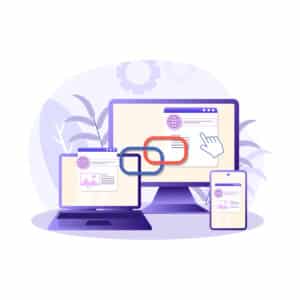Lead generation is a prospect-nurturing tactic that is becoming more prominent in marketing automation, and for a good reason. Developing a strong lead generation and qualification practice allows your marketing and sales teams to better work in tandem to turn prospects into leads. This is where content comes in. Producing quality content allows your sales team to have more meaningful personalized conversations with prospects, turning more prospects into clients.
You may be asking “what does lead generation look like in this scenario?” It looks like a simple process by which prospects exchange information, like their name, title, and email, in exchange for valuable content. Having captured this information, you can now make your content really work for you. From here you can send targeted content to your prospects and further develop your buyer personas. Below are the 5 types of content that are best for generating leads:
Automated Emails
Automated emails and marketing automation go together like peanut butter and jelly. You can’t have one without the other, so much so that 71% of B2B companies use email marketing (including automated emails) for customer acquisition and 68% use it for customer retention.*
To someone outside of the marketing scope signing up for an email may seem like nothing. But to marketers, it serves as a small sign that someone is interested in your company and the content you are producing. Once you have an email address, you have a direct line of communication with your prospect. All of your content such as new blogs, e-books and newsletters can be emailed straight to them, nurturing them from afar. And with marketing automation this process can be automated, cutting down on the time it would take you to send each email individually without sacrificing the personalized element.
E-Books
When it comes to creating a premium content offer, e-books are the way to go. E-books are extremely effective for generating leads because you can pack them with useful in-depth information, and you can lock them. You can lock an e-book because by going in-depth, it contains the type of information that prospects would pay for. However, money is not what is important here information is. For an e-book, give your audience the option to download it in exchange for their information, such as their name and email address. It might also be helpful to ask them for the name of their company and industry to create a more comprehensive profile. They get relevant content, and you get more information about those interested in your company.
Case Studies
Case Studies are another type of content ideal for lead generation. Typically less time consuming to create than an e-book, they also allow for more targeted information from a prospect as they indicate interest in what your company does, but more importantly results that have been generated for others. Offering multiple studies helps you to better identify what areas are of interest to your prospects, allowing you to start a more effective conversation.
Case studies can also be manipulated to fit your content needs. Individually they can be sent via email or displayed on the site, but when grouped together they can also serve as another premium content offer designed to gather information. In either form, it is important to feature at least 2 to 3 case studies for every product or service you offer to better show credibility.
Blogs
Blogs, once overlooked and underappreciated are now one of the more valued lead generation tactics, due to its dual nature. Blogs can serve as a demand generation asset, and a lead generation/qualifying tool. Demand generation differs in its desired outcome, which is to increase brand awareness as opposed to qualifying leads. When it comes to generating leads, blogs serve as a space where you can interact with your clients and work on nurturing relationships as they interact with the content. Implementing a subscribe button at the end of your blog is another avenue to generate and qualify leads. Readers can click the button to sign up and receive blogs via email, which is all set up using marketing automation.
Landing Pages
Landing pages can have many different functions, but in regards to lead generation, there are 2 that are the most prominent. Landing pages are often where premium content offers are housed, such as the e-book that was mentioned above. The content is the sole focus of the landing page, so having a page that is simple to read and navigate is key. Calls to action should be easy to find and access. Creating a landing page for a “Contact Us” form is the other primary function. Simplicity is key here as well, and so is the user-friendly and intuitive nature of the page.
If you are interested in creating a content strategy that will generate leads, click on the banner below to schedule your free 30-minute consultation with us today.




